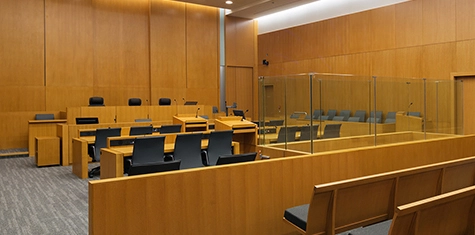A 5-4 majority of the U. S. Supreme Court, on June 27, 2024, granted a request for a stay of the Environmental Protection Agency’s (EPA) imposition of its Federal Implementation Plan (FIP) against more than 20 states that failed to meet their “good neighbor” obligations to decrease ozone-causing nitrogen oxide emissions within their borders under the Clean Air Act. The Court’s order in Ohio, et al., v. Environmental Protection Agency, et al ., stayed an EPA rule through the Court’s “shadow docket” before any lower court had a chance to consider the merits of the many challenges to the rule. This unprecedented action raises the question of whether a stay so early in the process is a one-off action or just the first in future such challenges that EPA and other federal agencies may face in the future.
The Ozone FIP and the Subsequent Challenges
On October 1, 2015, EPA lowered its 8-hour health-based ozone NAAQS standard to 70 parts per billion (ppb). See 80 Fed. Reg. 65292 (Oct. 26, 2015). This triggered a three-year deadline for every state to submit State Implementation Plans (SIPs) to EPA for how they planned to meet the new standard. By October 2018, EPA had received SIPs from virtually every state and Washington, D.C. On January 31, 2023, EPA fully disapproved 19 SIPs and partially disapproved two others for their failure to address adequately how to reduce ozone-forming NOx emissions that were negatively affecting downwind states’ ability to comply with the new ozone standard, i.e., for violating the “good neighbor” provision of the 2015 ozone NAAQS. See 88 Fed. Reg. 9336 (Feb. 13, 2023).
Less than two months later, EPA issued its “Good Neighbor Plan,” which was a Federal Implementation Plan (FIP) for 23 states (the 21 states with inadequate SIPs and the two that did not submit SIPs) to reduce NOx emissions at power plants, industrial facilities or both within those states. 88 Fed. Reg. 36654 (June 5, 2023). The FIP went into effect on August 4, 2023. In January 2024, EPA partially approved and partially disapproved SIP submittals for five more states and proposed including those states within the FIP beginning in 2025. See 89 Fed. Reg. 12666 (Feb. 16, 2024).
Several states and industry groups filed challenges to the SIP denials, the FIP or both in several U.S. District Courts of Appeals. The Fourth, Fifth, Sixth and Eighth Circuit Courts of Appeal granted motions throughout 2023 and early 2024 to stay EPA’s disapproval of the SIPs for the 12 states bringing challenges within their jurisdictions until the courts could rule on the merits. Meanwhile, by mid-February 2024, the Sixth, Seventh and Tenth Circuit Courts of Appeal had granted EPA’s motions to transfer the challenges before them to the D.C. Circuit Court of Appeals for consolidation and consideration there because the cases before them involved a nationally applicable rule, which is typically the province of the D.C. Circuit.
The D.C. Circuit Court of Appeals’ Stay Denial and the “Shadow Docket” Application
Meanwhile, a number of states, industry groups and corporations filed a separate challenge to the FIP with the D.C. Circuit and soon after requested the court stay the FIP’s implementation until the court made its decision on their challenge. The D.C. Circuit denied the stay request in September 2023. Petitioners then asked the Supreme Court — via its emergency (or “shadow”) docket — to stay implementation of the FIP while the challenge in the D.C. Circuit played out. The bases for the stay request included:
- The control measure cost-effectiveness determination in the FIP no longer made sense or would not achieve its purpose with application of the FIP to 12 of the original 23 states stayed by several appellate courts.
- The states would be injured if they were forced to begin complying with the FIP while the federal appellate courts were considering the various challenges to the FIP and the SIP denials.
In its first unprecedented step in this matter, the Supreme Court agreed to hear oral argument on this shadow document request, despite the fact that none of the federal appellate courts had yet to rule on the merits of the challenges. The Court ordered the parties to do expedited briefing on the applicants’ stay request and heard oral arguments (for only the third time on an emergency docket matter) on February 21, 2024.
The Majority’s Grant of the Stay and the Dissent’s Criticisms of That Decision
Five justices, in an opinion written by Justice Neil Gorsuch, found the applicants are likely to prevail on their claim the FIP was arbitrary and capricious. Specifically, the Court found EPA failed to give an adequate response to commenters’ concern that the FIP’s control measure cost-effectiveness determinations did not account for how those determinations may shift if the FIP is not applied to all the “upwind” states originally subject to the FIP. As such, EPA did not “reasonably explain[n]” the FIP and ignored “an important aspect of the problem” before it. The Majority concluded the applicants met their burden and ordered the FIP stayed until the D.C. Circuit disposed of the challenge or, if the matter is timely appealed to the Court, until resolution of the matter there.
Justice Amy Coney Barrett, in a dissent joined by the Court’s three liberal justices, criticized the Majority’s decision as granting “emergency relief in a fact-intensive and highly technical case without fully engaging with both the relevant law and the voluminous record.” One of the dissenters’ main critiques was that the Majority ignored the fact that EPA used a “state-agnostic methodology” in its cost-effectiveness analyses and resultant emissions controls, i.e., EPA calculated cost-effectiveness thresholds based on national, industry-wide data that was not dependent on the number of states covered by the FIP. The dissenting justices concluded the Court should not have granted the application because the applicants had failed to meet the high standard that warrants a stay.
Implications
The biggest question arising from this decision is not specific to this FIP. Eventually, the appellate court(s) — and perhaps even the Supreme Court — will decide the merits of this specific challenge. Oral arguments, in fact, are expected this fall in the D.C. Circuit. Rather, the most important question that lingers from this decision is whether the unprecedented steps the Court took to consider and grant this stay will remain unique to this case or whether the Court, through this decision, is signaling a willingness to use its emergency docket more frequently to intervene early in challenges not just to future EPA actions but those of other federal agencies, as well. That question will not be resolved by monitoring the progress of a single case but instead by watching how and when the Court uses its “shadow docket” in the years to come in response to similar requests.





